Out-of-the-box thinkers and sci-fi heroes
A mythic sci-fi universe of Filipino heroes is revealed at the exhibition “Di Pasisiil (The Unconquered)” that opens Wednesday, Feb. 2, at León Gallery International.
Two sculptors, Ram Mallari and Megs Empinado, present our Philippine patriots in an alternate universe that’s part history and part science fiction. Each specializing in the art forms that meld the 19th-century and the computer age and modern art together, they are just the pair to pull off this bold task.
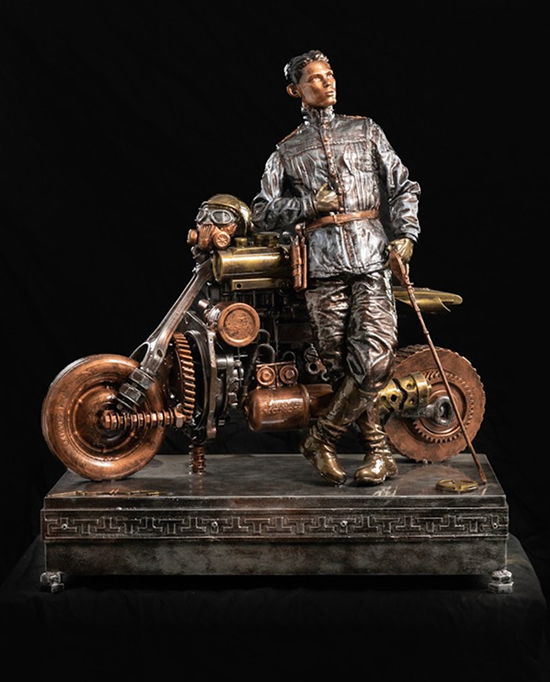
Mallari is the country’s best-known artist of all things steampunk, that mind-bending style that, as he puts it, “pretends that steam-power stuck around” and that the Victorian aesthetic of the mad inventor is alive and kicking. Think of the Sherlock Holmes or Kingsman experience, but on acid.
Empinado, on the other hand, is a Young Turk on the scene who cut his teeth sculpting collectible toys for such American giants as Marvel and DC Comics with a burgeoning international clientele.
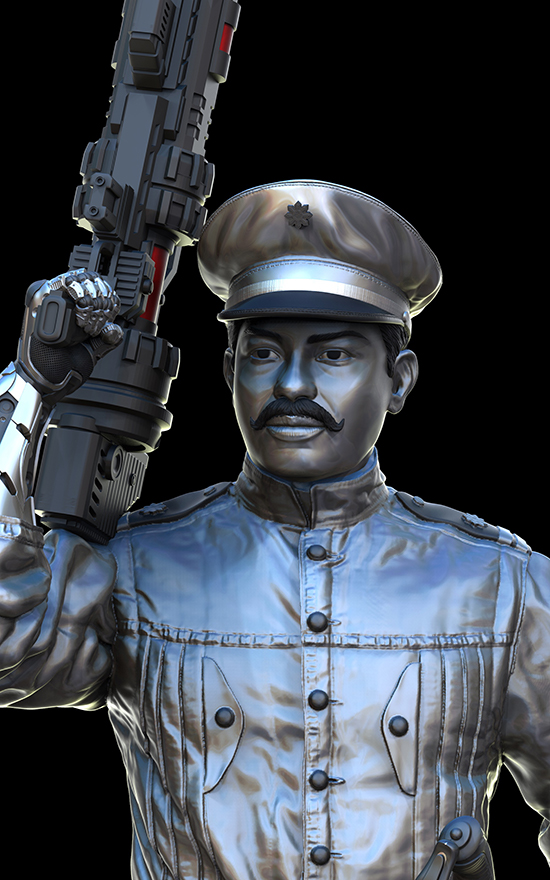
The pair met in a typical techie, superhero kind of situation as part of a 3D-printing group that banded together to make face shields for frontliners in the first dark days of the pandemic, offering to give them for free to different hospitals.
It’s also the same kind of Pinoy can-do mentality that powered up their approach to this exhibit—and which, when you come to think of it, must also have animated our favorite heroes in fighting their battles.
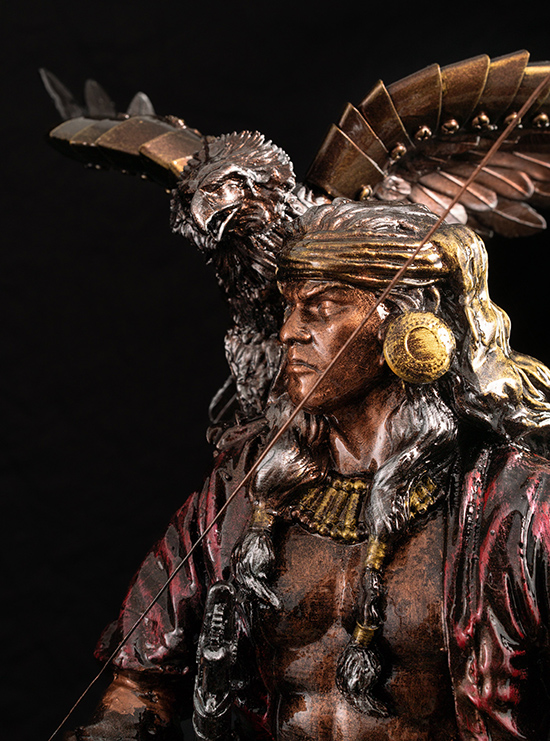
The pantheon, therefore, captures the country’s most out-of-the-box thinkers, each renowned for carving out their own destinies in a unique and courageous way: from Jose Rizal and Andres Bonifacio, to Heneral Luna and Emilio Aguinaldo, but also Macario Sakay, Gregorio del Pilar, Apolinario Mabini and Sultan Kudarat; also woman warrior Gabriela Silang and the country’s very first “unconquerable,” Lapulapu.

There is a difference, however. This extraordinary league comes straight out of an imagined cinematic universe, filled with android armor, Mad Max-style weaponry, and jet-propelled contraptions.
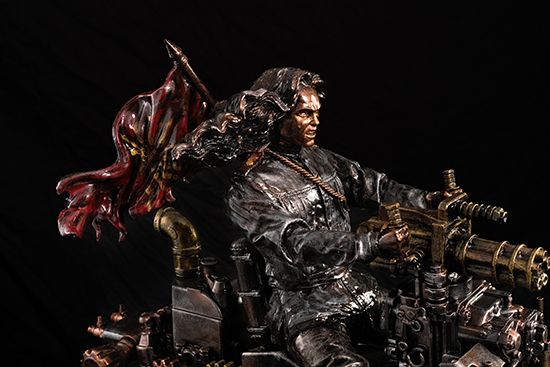
Thus, for example, Mabini, the “Sublime Paralytic,” is ready to spring into action on a motorized wheelchair with tank treads, alluding to the fact that his gargantuan intellect would not be deterred by mortal concerns. Macario Sakay, who styled himself as president of the Tagalog republic after Andres Bonifacio, is astride a motocross big bike. Sultan Kudarat, defender of Mindanao, steers a copper ship, an eagle on his shoulder. The gentleman-general Gregorio del Pilar leans rakishly against an elegant biped; while Heneral Luna commandeers a cannon with a mini-machinegun strapped to his wrist.
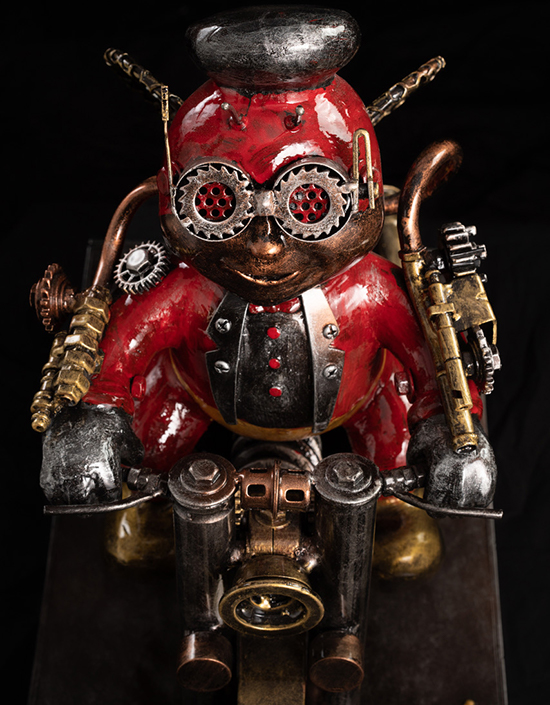
As Ram Mallari explains, “It’s been a long-time vision of mine to reimagine our Filipino patriots as a team of heroes in a world that’s real-life but also fantasy.”
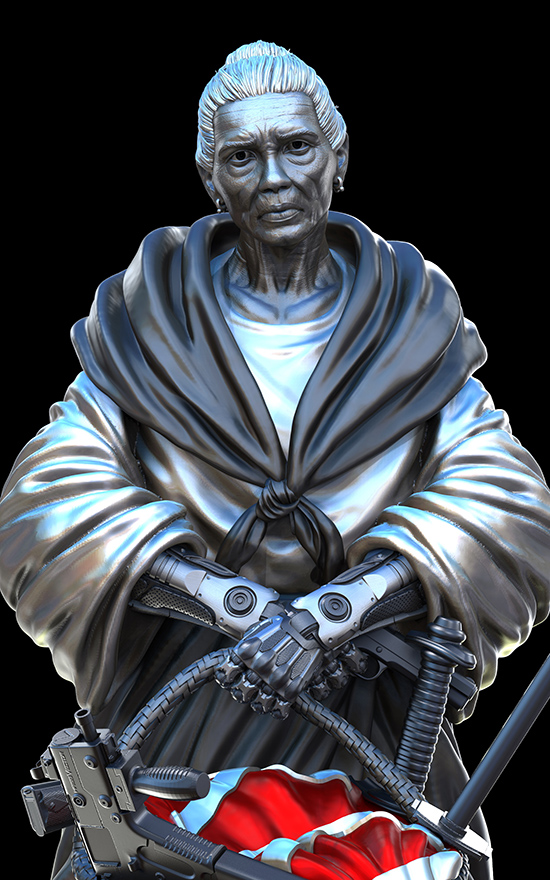
Megs Empinado picks up this thread, adding, “For myself, I explore the idea of cyberpunk. My objective is to tell a story where I attempt to merge the past, the present, and the future in each sculpture. Hopefully, my art will provide you with a time travel experience. I like to call it ‘wormhole punk,’ through which you can jump back and forth from one century to the next.”
Suitably, the 10 Filipino champions are collaborations of Mallari and Empinado working in tandem in pretty much perfect synergy. But there is more: each artist has also produced solo works embodying favorite figures of Filipino culture—from the Philippine tarsier and robotic bulul to Tandang Sora and the Battle of Mactan.
Through their works, the sculptors propound an interesting thesis: What if the different heroes worked as one and not, as so often happened, at cross-purposes with one another?



